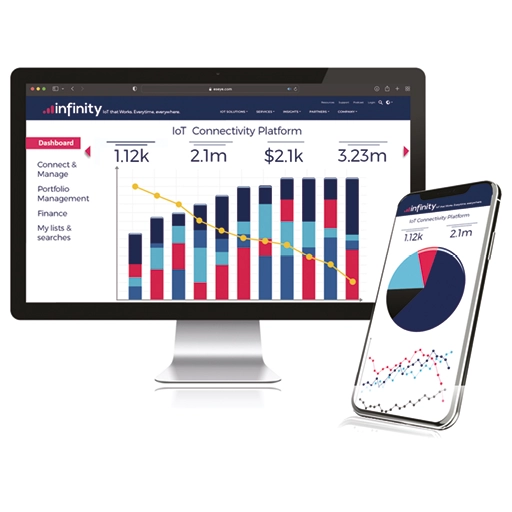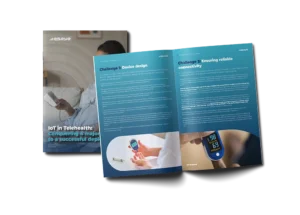

How IoT is transforming telehealth and remote patient monitoring
Telehealth – the remote patient monitoring (RPM) of patients using smart healthcare technology – is changing how people with long-term medical conditions and disabilities are being cared for. The Internet of Things (IoT) is playing an increasingly pivotal role in this transformation.
Using connected devices and sensors worn on the body, telehealth systems take biometric measurements of patients’ vital signs to keep an ongoing check on their health status. This might be for a known existing condition, such as diabetes. Healthy individuals can also choose to use the system as a preventative measure, to flag up any trends or patterns that require medical attention or proactive treatment.

Wearable movement detectors can be used to pick up subtle slowing movement in arthritis sufferers. Diagnostic devices can monitor blood pressure or blood sugar levels, or confirm whether medication has been taken. Many systems combine sensors with self-reporting mechanisms, for example via a dedicated tablet device or software app.
The data collected is transmitted to the device operator’s cloud. There, it is analysed in real-time, enabling life-improving recommendations to be made.
On this page, we take a look at the current telehealth IoT market, including the opportunities, the challenges of executing a deployment, and how to deliver an IoT project successfully.
A snapshot of the market
Digital monitoring of health conditions allows people to live safer and fuller lives, while reducing costs and pressure on already scarce resources. The actionable data and predictive analytics generated equip healthcare providers and medical professionals with insights they can use to provide more personalised and accurate diagnosis, treatment, and care plans.
Telehealth also presents a huge business opportunity for technology companies: the value of the IoT in Healthcare (IoHT) market is expected to grow from $128 billion in 2023 to $289 billion by 2028.
In Eseye’s State of IoT Adoption Survey, healthcare and medical device organisations rated entering new markets, 35%, reducing costs, 29%, increasing profit, 25%, and increasing revenue, 24% as the top benefits delivered by their IoT initiatives.
RPM devices collect highly sensitive and detailed personal data which informs important decisions about people’s lives. It must be captured accurately, or the wrong conclusions will be reached, and connectivity must work absolutely reliably or key signals may be missed.
Achieving this level of performance is presenting major challenges for many organisations in the healthcare and medical device sector, according to Eseye’s State of IoT Adoption Survey.
While 79% of respondents in this sector said IoT was a priority, and 97% intended to increase budgets, healthcare and medical device organisations were also most likely to say that their IoT project had not been successful. A total of 84% said it had not delivered the business outcome or realised the benefits expected at the outset.
Let’s find out why…
Challenge 1: Device design
In a recent survey undertaken by Kaleido Intelligence and sponsored by Eseye, 84% of respondents cited hardware design as the number one perceived barrier to deploying IoT.
Privacy and security of the data is a prime consideration, which means the device must be designed to ensure high levels of control over how information is collected, transported, and stored.
This control must not come at the cost of usability, however. The experience needs to be as frictionless as possible, so that even those with a low understanding of technology can use the device with ease. A device that is simple and intuitive will encourage adoption, as well as ensuring it’s used correctly.
Many remote patient medical devices need to be lightweight, unobtrusive, and robust. This places some limits on design options, which is not the case for larger or fixed pieces of technology.
Although connectivity can be implemented into existing devices, there’s a strong argument for designing devices with optimum connectivity in mind from the start. There are choices to be made here that will dictate the design.
If you have lots of connected devices, do you want to manage the whole connectivity path to each one individually with cellular modems, or connect them all to a central hub – for example using Bluetooth, Wi-Fi, Zigbee, or a proprietary standard?
It’s also essential to bear in mind that communication is not one way. If a device sends an alert to a user, how can they respond in a way that works for them? You also need to think about what happens at the other end. Does the device connect into a dedicated cloud service which analyses data and makes recommendations? Is there a person who needs to access the data? How should it be presented? Can they respond directly through the system?
All of these decisions will affect how connectivity is incorporated, and hence the device design, hardware, circuitry, and power source.
…there’s a strong argument for designing devices with optimum connectivity in mind from the start."
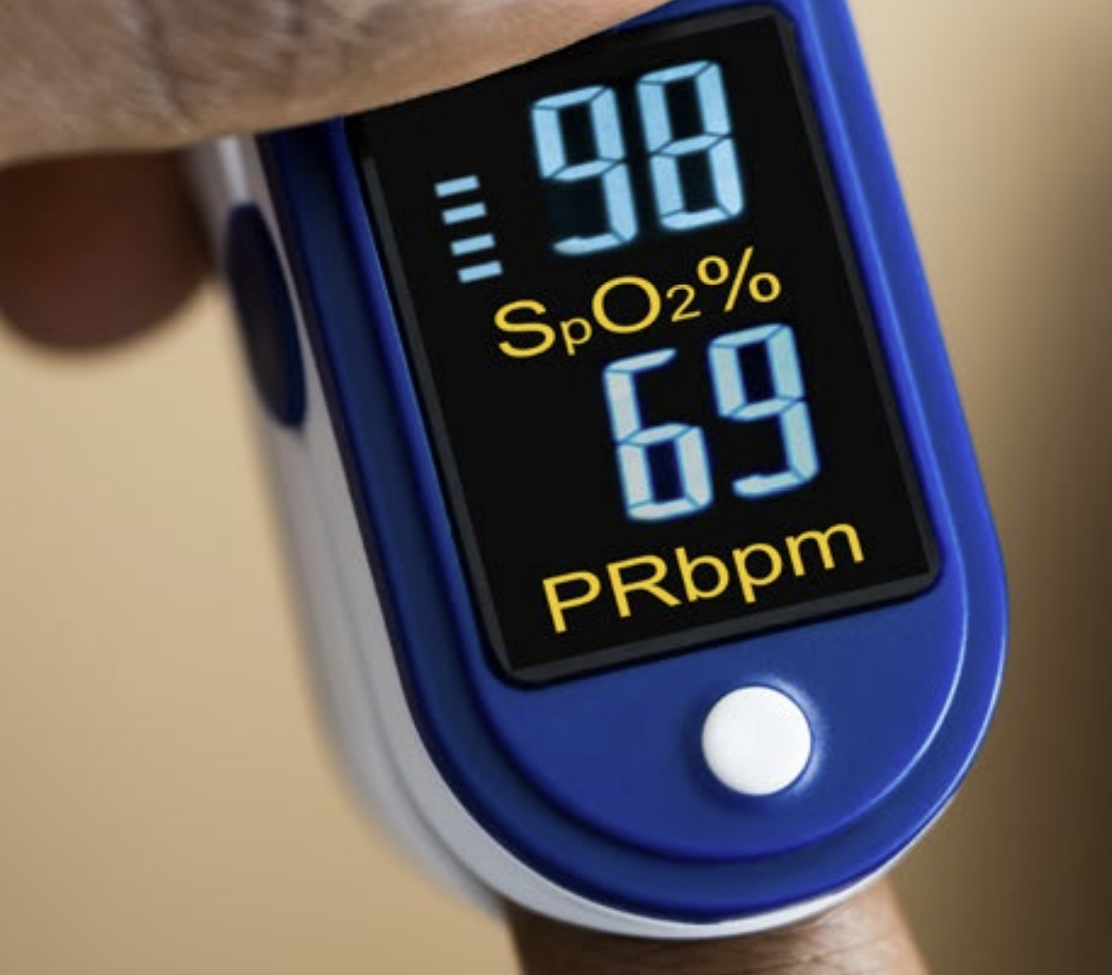
Challenge 2: Ensuring reliable connectivity
In Eseye’s State of IoT Adoption Survey, cellular connectivity was cited as a top challenge for 31% of healthcare and medical device respondents.
Telehealth devices require strong connectivity to securely and reliably capture and transmit data. For the service to be effective, connectivity must be dependable and continuous. A dropped connection at a key moment could literally be a matter of life and death, or at minimum, it could erode the user’s confidence in the system.
Devices should work straight out-of-the-box, automatically connecting to a mobile network without the need for complex setups. They must be able to operate anywhere in the world, from busy cities to remote villages where Wi-Fi availability isn’t guaranteed. Service providers must also consider that some users may not have Wi-Fi at home at all. This means that telehealth devices need to rely on cellular connectivity.
However, mobile networks still have reception black spots, and deploying thousands of devices on a single network across a country could leave 15-25% without reliable connection. On top of this, many governments are placing restrictions on IoT devices permanently roaming, increasing the risk of downtime. Research by Kaleido Intelligence found that in 12 countries, including Turkey and Brazil, permanent roaming is either banned or economically unfeasible, creating significant connectivity and deployment challenges.
To overcome this challenge, each device must be able to select the best network for the location it is in, and also seamlessly change from one to another if connectivity is lost or becomes patchy.
Ensuring connectivity is fit for purpose also involves testing it before deployment, to make sure it’s behaving as expected and that the tools for managing connectivity are effective within the device setup. Good testing involves putting the device in a sandbox and simulating difficult network conditions, such as if the local mobile mast breaks, to confirm that the device recovers quickly, or identify the changes that should be made if it does
not.
Challenge 3: Implementing adequate security
24% of survey respondents in the healthcare and medical devices sector said security of devices was a major challenge – the joint highest of all sectors covered by the research.
Security is absolutely critical for telehealth devices and systems, as they handle extremely sensitive personal data. Hardware, software, and connectivity platforms all need to be secure for IoT deployments to work effectively. The data itself also needs to be protected as it’s transmitted from device to database, and at the point of integration with the cloud where analytics will be performed.
Many consumer SIMs lack advanced certificate-based security measures, and send data over standard internet channels. This increases the risk of data being intercepted or lost. Dedicated solutions designed for secure applications offer better protection.
Telehealth device manufacturers should take an end-to-end approach to security. This involves encrypting information at the device, and communicating only via trusted private networks and secure gateways such as private APN or VPN which authenticate connections and ensure the service is authorised. Adding in tools which monitor data flows to detect unusual activity helps to prevent malicious attacks. Finally, it’s a good idea to contract a third-party pen tester to examine the system for weaknesses before deployment.
Security is absolutely critical for telehealth devices and systems, as they handle extremely sensitive personal data."
Challenge 4: The complexity involved in certification and deployment
Device deployment was cited as a major challenge by 27% of the healthcare and medical device organisations that responded to Eseye’s survey.
IoT projects are rarely straightforward. Large deployments typically involve widely distributed fleets of devices – and the connectivity requirement doesn’t align well with the geographically fragmented telecoms industry. To make it happen, you have to juggle many different telecom networks, support channels, quality of service (QoS) commitments, and contract negotiations.
Telehealth providers should seek a connectivity partner that offers commercial flexibility when managing multiple carrier relationships, with one price, one contract, and a single invoice. Implementing a single platform that supports all IoT connectivity, regardless of supplier, will simplify complexity, reduce the administrative barrier, save costs, and improve device reliability.
34% of healthcare and medical device sector respondents said they faced a major challenge around device onboarding, certification, and testing.
This sector was most likely to turn to specialist help and expertise with this aspect of a deployment, with 85% saying they’ve used managed or professional services for initial rollout or the ongoing management of their estate. Likewise, when asked what would make future IoT initiatives more successful, 31% cited support with professional services.
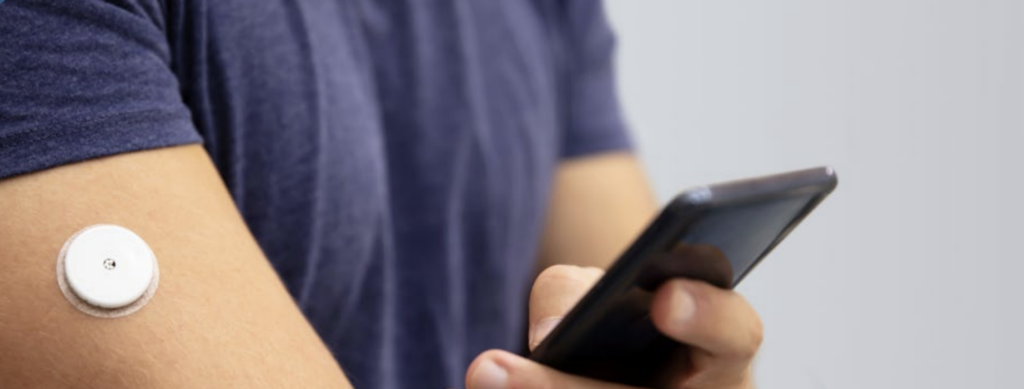
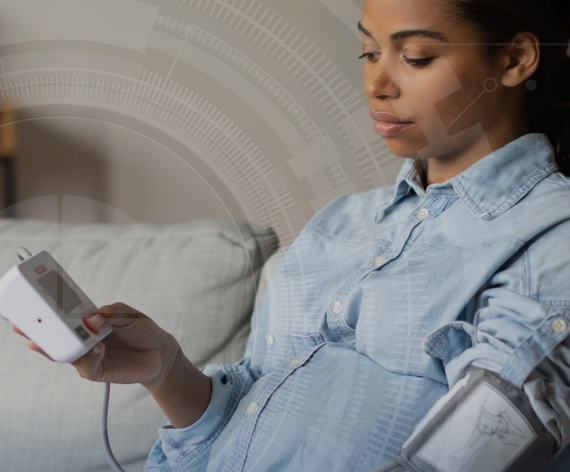
Telli Health
Telli Health’s innovative range of global remote patient monitoring devices includes a blood pressure monitor, blood glucometer, pulse oximeter, and thermometer.
Depending on a single cellular connectivity provider wasn’t delivering the necessary service uptime, geographical coverage, reliability, and quality of service. A multi-network approach was the solution, but this raised challenges in terms of device network certification and roaming capabilities.
Through partnering with Eseye, Telli Health became the first in the global healthcare device marketplace to achieve eUICC certification on Verizon’s award-winning 4G LTE network in the United States.
With Verizon as part of Eseye’s global federation of connectivity partners, Eseye can offer IoT connectivity across the U.S. through its award-winning AnyNet+ eSIM, featuring an embedded Universal Integrated Circuit Card (eUICC) and multi-IMSI capabilities, which can ensure Telli Health devices stay connected to the Verizon network.
Telli Health selected Eseye to manage this process end-to-end, utilising Eseye’s unrivalled technical device and network expertise to achieve eUICC certification through:
- Device preparation and behaviour analysis.
- Onboarding with AnyNet+ eUICC eSIMs to ensure the RPM
device responds to changing connectivity environments. - Testing the device and ensuring it has passed tests for
eUICC-compliant network switching. - Launching the device and enabling eUICC localization to
Verizon once devices are live.
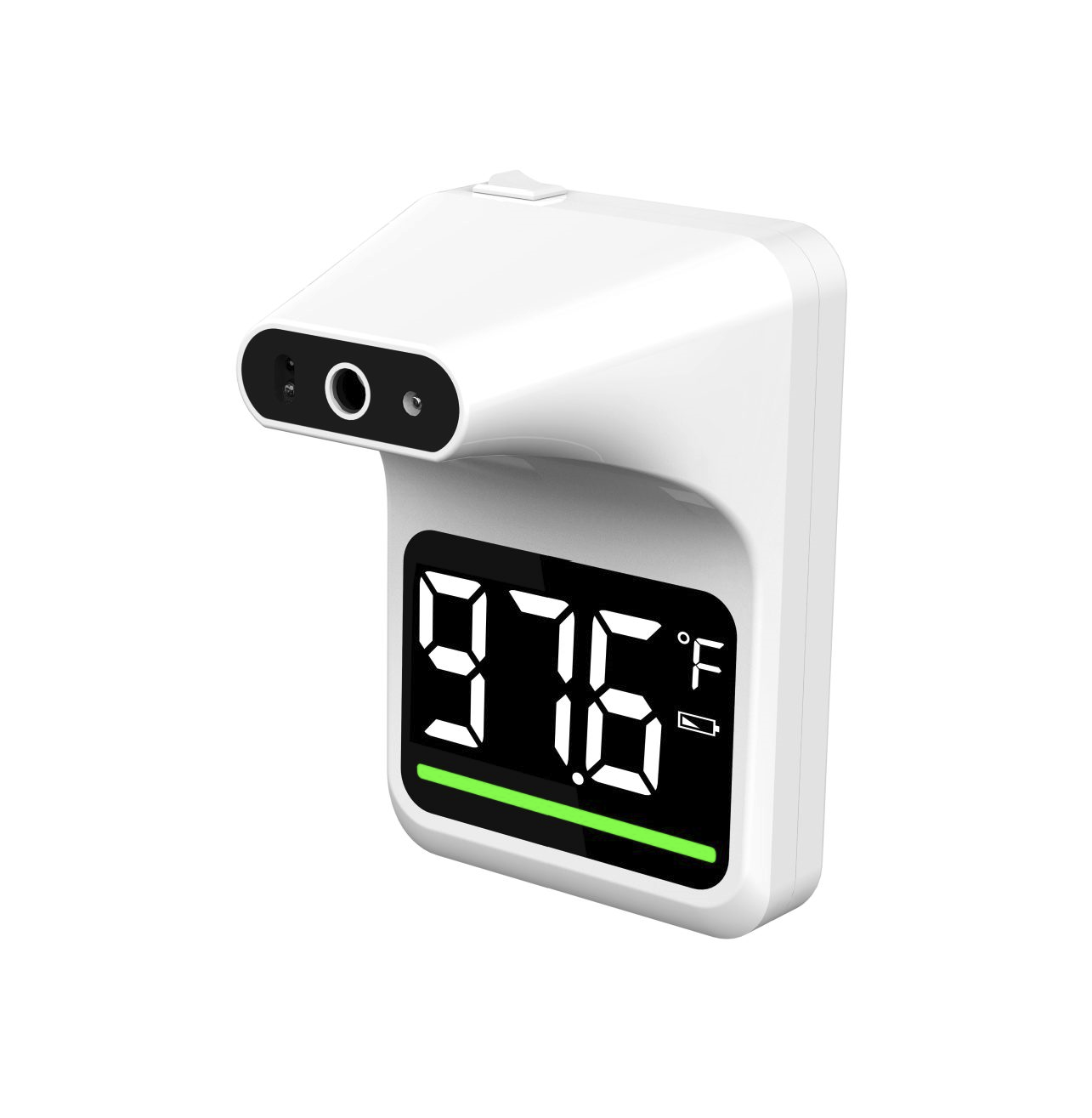
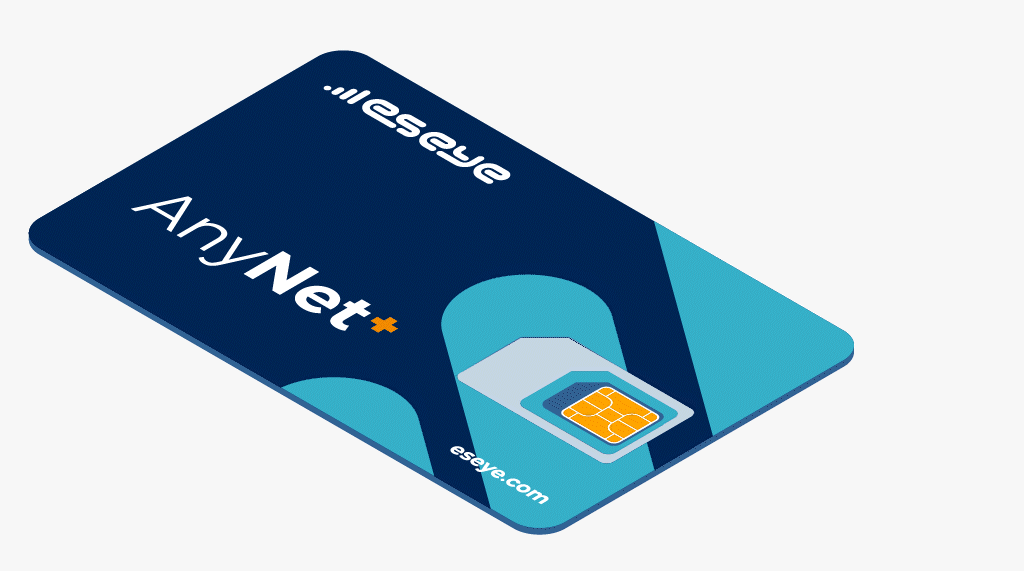
Did you know: Eseye’s AnyNet+ eSIM can be loaded with up to 10 bootstrap profiles?
By conducting a series of thorough tests, your device will be robust and resilient enough to handle anything that comes its way."
The future of telehealth
The COVID-19 pandemic accelerated the digital transformation of the healthcare industry. Today, IoT innovations are being widely implemented to help healthcare organisations improve the delivery and quality of patient care, while reducing costs and pressure on resources.
Telehealth offers a rapidly expanding opportunity for both business innovation and social good, with genuine power to change people’s lives for the better. By addressing the challenges created by the unique characteristics of a telehealth IoT deployment – including a geographically dispersed estate and the unique needs of users – providers can deliver an efficient, effective, and profitable service.
Ultimately, ensuring every device has completely reliable, out-of-the-box connectivity will be key to industry growth and to customer satisfaction and trust.
Biofourmis
Biofourmis is the creator of a ground-breaking solution that allows patients to be monitored via an IoT-connected device worn on the upper arm, which measures vital signs and biomarkers. Using an app on the patient’s smartphone, the device sensors collect the data and send it via the cloud to the Biofourmis platform, where clinicians can access it.
The system alerts the clinician if the patient’s condition changes, so they can quickly intervene. The use of Bluetooth to connect the device and the app sometimes created ‘blind spots’, so Biofourmis embarked on a project to move to cellular connectivity instead.

Eseye’s mobile network alliance – the AnyNet Federation – gives Biofourmis access to more than 800 cellular networks worldwide, supporting its vision to expand across multiple markets. The AnyNet+ eSIMs embedded in each device provide near 100% uptime by switching instantly to an alternative network if connectivity drops. Biofourmis also took advantage of Eseye’s expert device validation services to reduce complexity and build in connectivity correctly from the start.
There are many different phases of the project where we can come in and offer value to you, even if you’ve already started some of the work yourself."
Jon Darley, Director of Things, Eseye.
Why work with Eseye on your telehealth IoT project?
Eseye is a cellular connectivity specialist with a wealth of experience in guiding organisations through complexity to deliver IoT successfully. We understand the unique challenges faced by telehealth manufacturers, whose users are widely dispersed and not always tech-savvy. Working together from the planning and development stage right through to device testing and rollout, we enable them to maximise business value while minimising project risk.
Our AnyNet+ eSIM allows continuous and ubiquitous cellular connectivity to be built into telehealth devices by design. The eSIM can be programmed to automatically detect and connect to the most available mobile network and to switch network if the connection drops or the environment changes – for example, if the user goes for a walk and ventures into a black spot. This is true anywhere in the world, thanks to Eseye’s relationships with more than 800 mobile network operators.
Data security is also built in. Our eSIMs encrypt information and communicate only with Eseye’s secure private access point name (APN). This authenticates connections and routes the data from the device to the cloud via trusted channels and automatically integrates directly with trusted cloud services, such as AWS IoT Core.
Eseye’s Infinity IoT Platform™ is the enabling infrastructure underpinning our solution, providing complete oversight and seamless management of both connectivity and devices from a single system.
Wherever you are in the development of your telehealth device, system, or service – and whether you require one-off specialist guidance or need someone to manage your expanding IoT estate – Eseye’s IoT connectivity solutions and IoT services can help you.
Unlock the full potential of IoT in telehealth and remote patient monitoring.
Whether you’re looking to enhance patient care or streamline your healthcare solutions, Eseye can help you navigate the complexities of IoT deployment.
